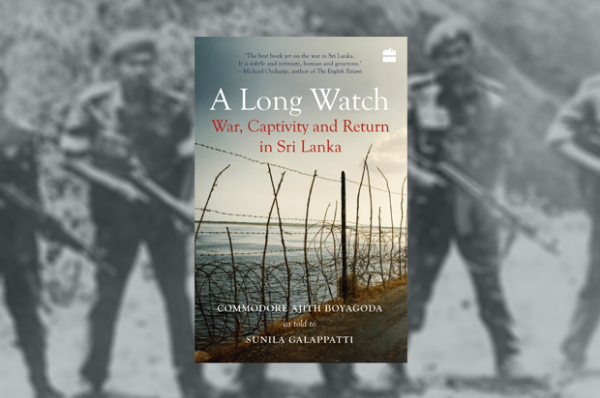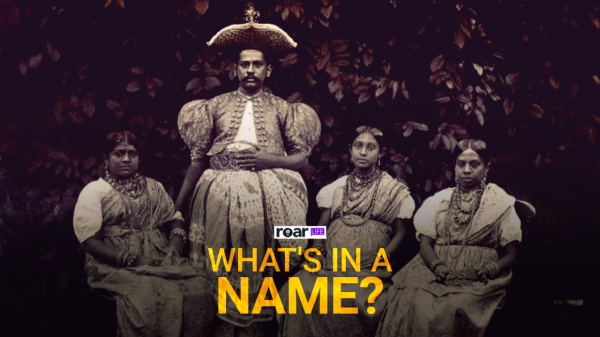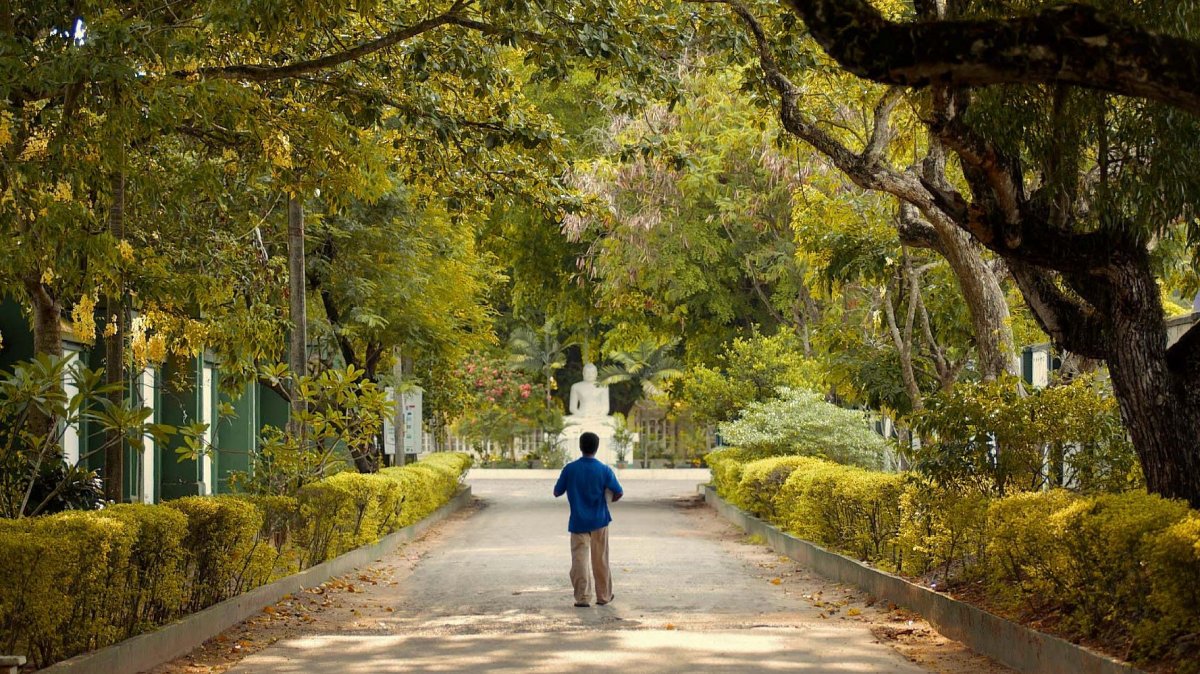
It needs to be said at the outset that Premaya Nam (Dirty, Yellow, Darkness) is a very brave film. It is also an important film. While it’s not without its [occasionally glaring] flaws ‒ and let’s face it; what modern Sri Lankan production is? ‒ Kalpana Ariyawansha’s and his brother Vindana’s directorial debut is the closest thing to a work of art that today’s increasingly discerning moviegoers will get that handles its subject matter with the kind of respect and seriousness it deserves.
Of course, it goes without saying that no theme ought to be too sacred, no topic too taboo for a filmmaker to explore as he or she sees fit ‒ as required by his or her creative vision. However, given the demonstrably abysmal treatment that mental illness has been historically meted out to in this country both off and on-screen, with some shockingly irresponsible portrayals over the decades perpetuating stereotypes and causing untold, irrevocable damage, it is heartening to see a genuine effort being made to finally get it right. In that regard alone, Premaya Nam is, without any hyperbole, a breath of fresh air and is richly deserving of all the accolades currently being heaped upon on it by critics and casual audiences alike ‒ just as long as one doesn’t go in expecting Sri Lanka’s answer to Rain Man (or even the lesser A Beautiful Mind).
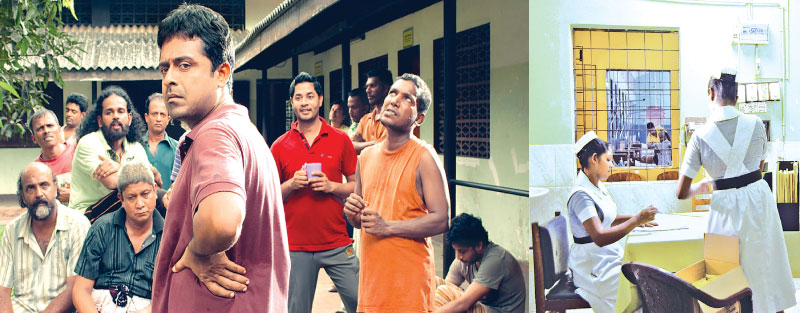
Premaya Nam was the first film ever to be shot on location at the NIMH. Image courtesy Daily News
Mild spoilers ahead…
Premaya Nam tells the story of a smart, sophisticated, and otherwise level-headed upper-middle class 30-something named Vishwa (played to near-perfection by Shyam Fernando) who suffers from a severe case of obsessive compulsive disorder (OCD). His particular case is a rather unique one in that he has a debilitating fear of his own urine ‒ or, more specifically, the aftereffects of the act of urinating. Vishwa’s condition forces him to have a long and arduously thorough shower every time he goes to the loo, whether at home or at work. He must also keep his hands raised at all times so that they won’t come into contact with what he believes to be his highly contaminated nether regions ‒ even when he’s out shopping or having dinner with friends. His marriage is falling apart, as his hitherto forgiving wife Samadhi (Samanalee Fonseka), in the face of immense parental pressure and growing frustration at her husband’s refusal to continue treatment, has reached the end of her tether. In desperation, Vishwa admits himself to the National Institute of Mental Health (NIMH) in Angoda, hoping to find a lasting solution to his crippling predicament.
It’s not unusual to see the familiar ‘based on a true story’ tag in a lot of films of this nature, but it’s very rarely that that story happens to be the real life experience of the person helming the film. Director and cowriter Vindana Ariyawansa’s own battles with clinical OCD formed the basis of the script, and perhaps it was this, more than anything else, that resulted in Premaya Nam being what it is: a deeply personal portrayal of the horrors of mental illness that simultaneously serves as an appeal to the public to reconsider its preconceived notions on the same. That the film manages to achieve this without being laughably heavy-handed ‒ as Sinhala cinema [commercial and art house alike] often tends to do ‒ is an achievement on its own.

The Ariyawansa brothers with cinematographer Jaan Shenberger on location at the NIMH. Image courtesy The Nation
The first and only film to be shot on location at the NIMH premises, Premaya Nam benefits from the thoughtful and understated photography of cinematographer Jaan Shenberger, whose talents the directors have used to full effect, though at times the film does suffer from having a made-for-TV aesthetic. Thankfully, however, this doesn’t detract from the film’s overall tone.
In terms of acting, to say Shyam Fernando brings in his A game would be an understatement. It’s a demanding role that requires a level of discipline and sophistication that only a true thespian of Fernando’s calibre can bring. To give a convincing yet ‒ crucially ‒ understated performance of a character seemingly on the path to insanity, without letting his inner demons steal the show (in a way that the performance overshadows the message) is no mean feat, and Fernando nails it. A lesser actor than him, it’s not a stretch to say, would’ve over-acted the living daylights out of this role. Samanalee Fonseka, too, did a commendable job of Vishwa’s understanding but increasingly frustrated wife, though personally her character could’ve used more development, and it felt as though the script didn’t give her enough material to work with ‒ particularly with regard to showcasing the all too human vexation of living with a sick man you once loved but no longer recognise.
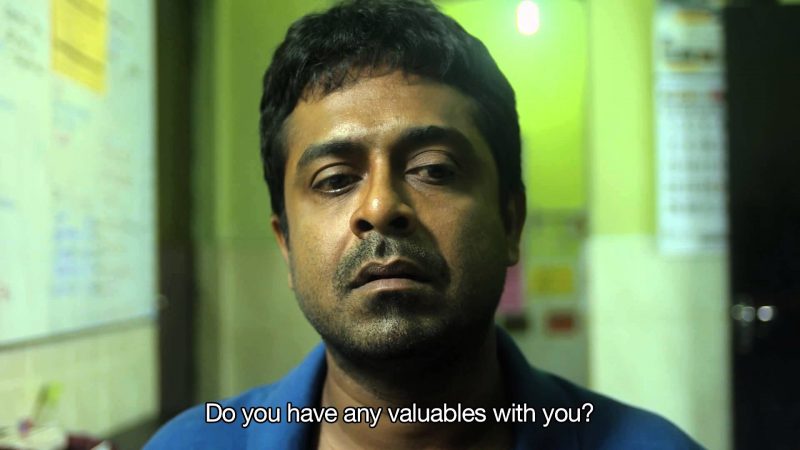
Shyam Fernando as Vishwa. Image courtesy YouTube
Perhaps the most refreshing roles in Premaya Nam ‒ in terms of sheer realism ‒ went to the handful of supporting actors that played the NIMH hospital staff. Suranga Ranawaka, in particular, shines as the gentle but firm head nurse of a government hospital ‒ so much so that a lot of people Roar spoke to walked away from the film under the impression that she and the rest of the nurses hadn’t been paid actors but real-life NIMH staffers. There was, however, one real-life medical professional who played an important role in the film: Dr. Sathis Wijemanna, the consultant plastic surgeon who played the character of Vishva’s psychiatrist. It’s safe to say if (God forbid) his medical career doesn’t pan out, Dr. Wijemanna has a fallback option that would be the envy of many a full-time actor. Although, he should perhaps have a few more roles under his belt before he thinks about quitting his day job (we jest)! (There is also a surprise cameo from a well-known science communicator. Keep an eye out for a certain bespectacled professor towards the second half of the film).
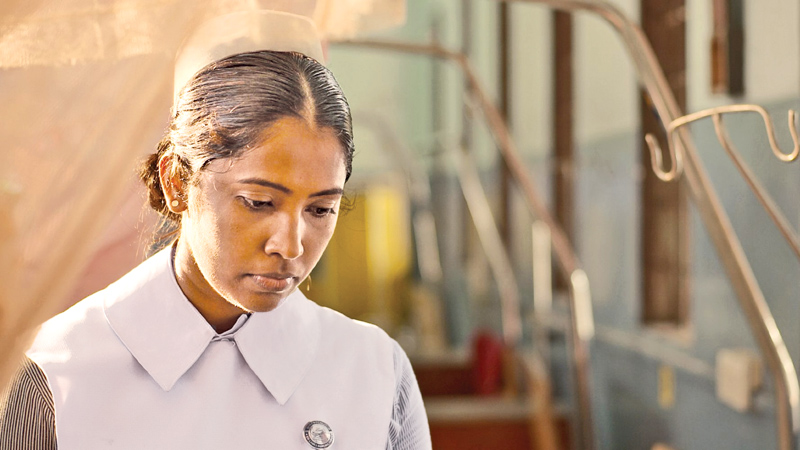
Suranga Ranawaka as Nurse Inoka. Image courtesy Daily News
This writer’s biggest gripe with Premaya Nam was its dialogue. The script was reportedly written in English and later translated to Sinhala, and it shows. A lot of the dialogue feels clunky and more than a little hamfisted on occasion. Though the actors were able to overcome this for the most part, there were times, especially in key moments of the narrative, when certain lines felt jarringly forced and out of place (examples include the flashback to the time when Vishwa and Samadhi first meet, and when Vishwa speaks to his friend about his new job). Overall, however, the script was as tight as it could’ve been, and the actors did a fine job of carrying it to the finish line, ably guided by the undoubtedly talented director duo.
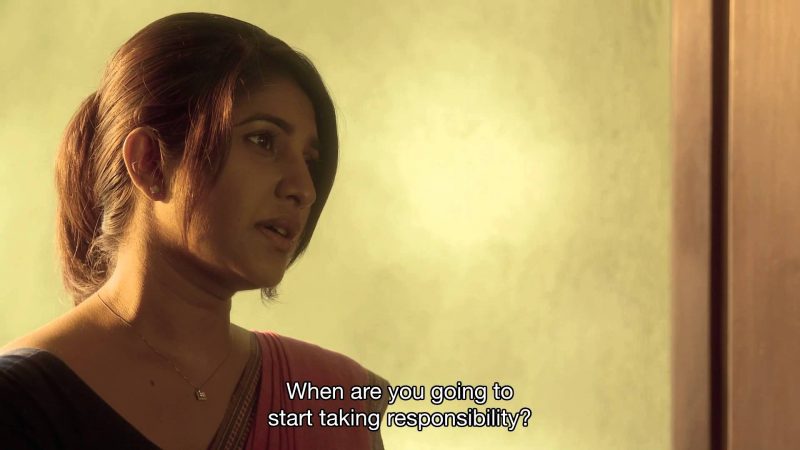
Samanalee Fonseka as Samadhi. Image courtesy YouTube
Flaws notwithstanding, Premaya Nam is a decent enough film that manages to do what it sets out to do: To tell a believable, relatable story that will hopefully open the eyes of an often apathetic (if not outright hostile) society to a problem it barely understands, without – and this bears repeating – preaching from the mountaintops. While it stops just short of being a masterpiece (by local standards, anyway), Premaya Nam excels in getting the audience to sit back and ponder in quiet contemplation what they had just seen (this reviewer witnessed this first hand at a screening at the Regal theatre in Colombo), and ultimately, that is what true cinema should be all about.
7/10.
Cover image courtesy IMDb




